Science
(www.olympiadsuccess.com)
Chapter 2: Nutrition in Animals
Class: VII
Multiple Choice Questions
Question 1
Given below from (i) to (iv) are some food items.
(i) Boiled and mashed potato
(ii) Glucose solution
(iii) A slice of bread
(iv) Mustard oil
Which of the above will give blue-black colour when tested with iodine?
(a) (i) and (ii) (b) (i) and (iii)
(c) (ii) and (iii) (d) (iii) and (iv)
Answer
(b)
Question 2
Which of the following pair of teeth differ in structure but are similar in function?
(a) canines and incisors.
(b) molars and premolars.
(c) incisors and molars.
(d) premolars and canines.
Answer
(b)
Question 3
Read carefully the terms given below. Which of the following set is the correct combination of organs that do not carry out any digestive functions?
(a) Oesophagus, Large Intestine, Rectum
(b) Buccal cavity, Oesophagus, Rectum
(c) Buccal cavity, Oesophagus, Large Intestine
(d) Small Intestine, Large Intestine, Rectum
Answer
(a)
Question 4
The swallowed food moves downwards in the alimentary canal because of
(a) force provided by the muscular tongue.
(b) the flow of water taken with the food.
(c) gravitational pull.
(d) the contraction of muscles in the wall of food pipe.
Answer
(d)
Question 5
The acid present in the stomach
(a) kills the harmful bacteria that may enter along with the food.
(b) protects the stomach lining from harmful substances.
(c) digests starch into simpler sugars.
(d) makes the medium alkaline.
Answer
(a)
Question 6
The finger-like outgrowths of Amoeba helps to ingest food. However, the finger-like outgrowths of human intestine helps to:
(a) digest the fatty food substances.
(b) make the food soluble.
(c) absorb the digested food.
(d) absorb the undigested food.
Answer
(c)
Question 7
Read the following statements with reference to the villi of small intestine.
(i) They have very thin walls.
(ii) They have a network of thin and small blood vessels
close to the surface.
(iii) They have small pores through which food can easily
pass.
(iv) They are finger-like projections.
Identify those statements which enable the villi to absorb
digested food.
(a) (i), (ii) and (iv) (b) (ii), (iii) and (iv)
(c) (iii) and (iv) (d) (i) and (iv)
Answer
(a)
Question 8
The false feet of Amoeba are used for
(a) movement only.
(b) capture of food only.
(c) capture of food and movement.
(d) exchange of gases only.
Answer
(c)
Question 9
The enzymes present in the saliva convert
(a) fats into fatty acids and glycerol.
(b) starch into simple sugars.
(c) proteins into amino acids.
(d) complex sugars into simple sugars.
Answer
(b)
Question 10
Cud is the name given to the food of ruminants which is
(a) swallowed and undigested.
(b) swallowed and partially digested.
(c) properly chewed and partially digested.
(d) properly chewed and completely digested.
Answer
(b)
Question 11
Choose the correct order of terms that describes the process of nutrition in ruminants.
(a) swallowing → partial digestion → chewing of cud →
complete digestion
(b) chewing of cud → swallowing → partial digestion →
complete digestion
(c) chewing of cud → swallowing → mixing with digestive
juices → digestion
(d) swallowing → chewing and mixing → partial digestion
→ complete digestion
Answer
(a)
Question 12
Cellulose-rich food substances are good source of roughage in human beings because
(a) human beings do not have cellulose-digesting enzymes.
(b) cellulose gets absorbed in the human blood and converts into fibres.
(c) the cellulose-digesting bacteria convert cellulose into fibres.
(d) cellulose breaks down into smaller components which are egested as roughage.
Answer
(a)
Very Short Answer Questions
Question 13
Name the parts of the alimentary canal where
(i) water gets absorbed from undigested food.
(ii) digested food gets absorbed.
(iii) taste of the food is perceived.
(iv) bile juice is produced.
Answer
(i) Large intestine (ii) Small intestine (iii) Tongue (iv) Liver
Question 14
Mark the following statements as True or False. If false, write the correct statements.
(a) Tongue is attached to the roof of the mouth cavity at the back.
(b) The large intestine is longer and wider than the small intestine of the human alimentary canal.
(c) Mucus protects the stomach lining from damage.
(d) All heterotrophs have a similar basic process of nutrition.
Answer
(a) False – Tongue is attached to the floor of the mouth cavity at the back.
(b) False – The large intestine is shorter and wider than the small intestine of the human alimentary canal.
(c) True
(d) True
Question 15
Choose the odd one out from each group and give reasons.
(i) liver, salivary gland, starch, gall bladder
(ii) stomach, liver, pancreas, salivary gland
(iii) tongue, absorption, taste, swallow
(iv) oesophagus, small intestine, large intestine, rectum
Answer
(i) Starch; gall bladder, liver , salivary glands are all glands.
(ii) Stomach; salivary gland, liver, pancreas are digestive glands.
(iii) Absorption; otaste, tongue, swallow are parts of the mouth.
(iv) Small intestine; no juices are released by other parts/ no digestion in other parts.
Question 16
You were blindfolded and asked to identify the drinks provided in two different glasses. You could identify drink A as lime juice and B as bitter gourd juice. How could you do it inspite of being blindfolded?
Answer
Inspite of being blindfolded you were able to identify both the juices distinguishably was because of the different types of taste buds present in the tongue.
Question 17
Fill in the blanks with suitable words:
(a) The alimentary canal stretches from to .
(b) Teeth are rooted in separate in between the .
(c) Digestion of food starts in and gets completed in .
(d) is the largest gland in the human body.
Answer
(a) mouth, anus (b) sockets, gums (c) buccal cavity, small intestine (d) liver
Question 18
Following statements describe the five steps in animal nutrition. Read each statement and give one word for each statement. Write the terms that describes each process.
(a) Transportation of absorbed food to different parts of body and their utilisation.
(b) Breaking of complex food substances into simpler and soluble substances.
(c) Removal of undigested and unabsorbed solid residues of food from the body.
(d) Taking food into the body.
(e) Transport of digested and soluble food from the intestine
to blood vessels.
Answer
(a) Assimilation (b) Digestion (c) Egestion (d) Ingestion (e) Absorption
Short Answer Questions
Question 19
Match the animals in Column I with their mode of feeding listed in Column II
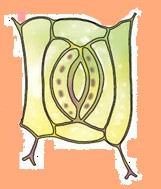
Answer
(a) (iii); (b) (i); (c) (iv); (d) (ii)
Question 20
Boojho took some grains of boiled rice in test tube ‘A’ and Paheli took boiled and chewed rice in test tube ‘B’. Both of them poured 1 – 2 drops of iodine solution into the test tube and observed the colour change. What colour change would they have observed? Give reasons for your answer.
Answer
The colour in test tube "A" turned in blue black colour because of the presence of starch.
In test tube ‘B’ – The colour in test tube "B" remain unchanged because of digestion of starch into sugars.
Question 21
‘A’ got her gall bladder removed surgically as she was diagnosed with stones in her gall bladder. After the surgery, she faced problems in digestion of certain food items when consumed in bulk. Can you tell which kind of food items would they be and why?
Answer
The kind of food item would have been fat because the bile juice of the gall bladder
helps in the digestion of fat. Removal of gall bladder lead to the difficulty in digestion of fatty substances.
Question 22
Match the organs in Column I with the words listed in Column II.
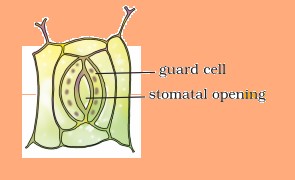
Answer
(a) (iv); (b) (v); (c) (i); (d) (iii); (e) (ii)
Question 23
Ruminants such as cows and buffaloes swallow their food hurriedly and then sit restfully and chew their food. Can you reason why?
Answer
Ruminants take time and chew their food properly for complete digestion.
Question 24
Boojho and Paheli were eating their food hurriedly so that they could go out and play during the recess. Suddenly, Boojho started coughing violently. Think of the reasons why he was coughing and discuss with your friends.
Answer: Sometimes, on eating hurriedly, or talking or laughing while eating, the epiglottis (closing the passage of windpipe) remains open. Thus, the food swallowed may enter the wind pipe which will lead to the coughing to help it clear out.
Long Answer Questions
Question 25
Fill in the blanks using the words listed below.
water, front, intestinal, salts, pseudopodia, back, vacuole
(a) The digestion of all food components is completed by
the ____________ juice.
(b) Large intestine absorbs ___________ and some __________
from the undigested food.
(c) Tongue is attached at the _____________ to the floor of
the mouth cavity and is free at the _____________.
(d) Amoeba pushes out _____________ around the food and
traps it in a food _____________.
Answer
(a) intestinal (b) water, salts (c) back, front (d) pseudopodia, vacuole
Question 26
Label the below given Figure 2.1 as directed below in (i) to (iv)
and give the name of each type of teeth.
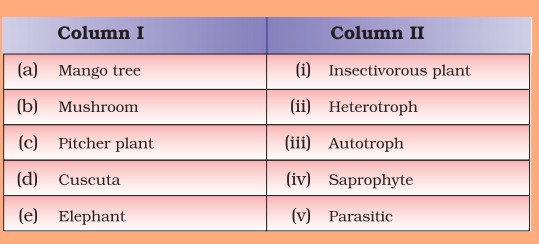
Fig. 2.1
(i) The cutting and biting teeth as ‘A’
(ii) The piercing and tearing teeth as ‘B’
(iii) The grinding and chewing teeth as ‘C’
(iv) The grinding teeth present only in adult as ‘D’
Answer
Question 27
Read the following passage carefully and answer the questions that follows it.
Bile juice is stored in a sac called, gall bladder, located near its organ of secretion, liver. The gall bladder releases the bile juice into the small intestine whenever food reaches there. Though bile juice is devoid of any digestive enzymes, it is required for the digestion of fats. The fats cannot be digested easily because they are insoluble in water and are present as large globules. Bile juice breaks down big fat droplets into smaller droplets. These are then easily digested by the enzymes released from the pancreas.
(a) Which organ secretes the bile juice?
(b) Why is digestion of fats difficult as compared to that of other nutrients?
(c) How does bile juice help in digestion of fat?
(d) Where is the digestion of fat completed?
(e) Does bile juice digest fat completely?
Answer
(a) Liver
(b) Insolubility of fat in water.
(c) Bile juice helps in breaking down big fat droplets into smaller droplets.
(d) Small intestine
(e) No
Question 28
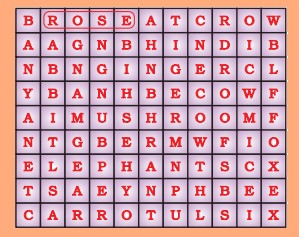
Fig. 2.2
Label the following parts in Figure 2.2 and name them.
(a) The largest gland in our body.
(b) The organ where protein digestion starts.
(c) The organ that releases digestive juice into the small intestine.
(d) The organ where bile juice gets stored.
Answer: (a) Liver (b) Stomach (c) Pancreas (d) Gall bladder
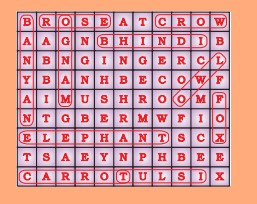
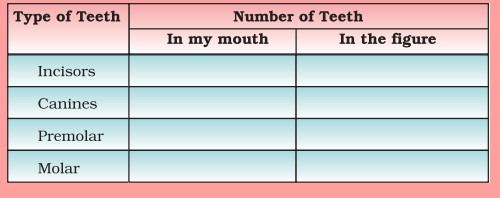
Question 29
Open your mouth, look into a mirror and try to count the different types of teeth in your mouth. Compare them with Figure 2.3 on page 13 of your NCERT textbook. Record your observations in the table below:
(a) Did you observe any difference in the number of teeth? If yes, could you identify which type of teeth showed the difference?
(b) Compare the number and type of teeth in an adult (say your parents or cousins who have reached the age of 25–30 or more). Note your observation.
Answer
There are 28 teeth in a child’s mouth with only four molars in each jaw and not six unlike in adults who have six molars in each jaw.
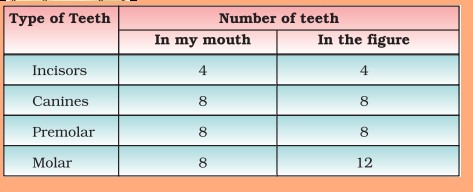
Question 30
Solve the crossword given as Figure 2.3.
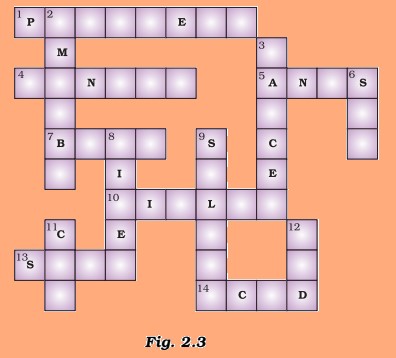
Fig. 2.3
Across
Down
Answer
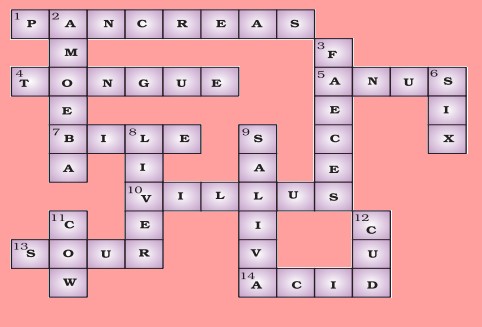
Yearlong program for Olympiads preparation & to build necessary skills for future.
Explore More
Time to mark your calendar with the upcoming Olympiads exam schedule.
Explore More
Take your Olympiad preparation to next-level by taking LIVE Classes.
Explore More
Assess your performance by taking topic-wise and full length mock tests.
Explore More
Online tuitions for international compeitions like SASMO, SEAMO, etc for Grades 1-11.
Explore More